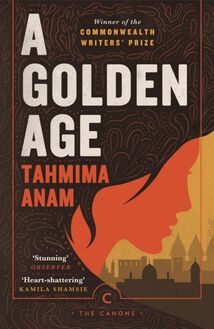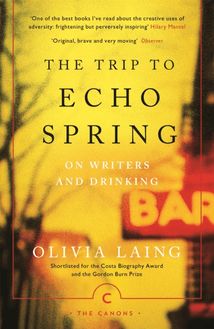-
 Univers
Univers
-
 Ebooks
Ebooks
-
 Livres audio
Livres audio
-
 Presse
Presse
-
 Podcasts
Podcasts
-
 BD
BD
-
 Documents
Documents
-
- Cours
- Révisions
- Ressources pédagogiques
- Sciences de l’éducation
- Manuels scolaires
- Langues
- Travaux de classe
- Annales de BEP
- Etudes supérieures
- Maternelle et primaire
- Fiches de lecture
- Orientation scolaire
- Méthodologie
- Corrigés de devoir
- Annales d’examens et concours
- Annales du bac
- Annales du brevet
- Rapports de stage
La lecture à portée de main
Vous pourrez modifier la taille du texte de cet ouvrage
Découvre YouScribe en t'inscrivant gratuitement
Je m'inscrisDécouvre YouScribe en t'inscrivant gratuitement
Je m'inscrisEn savoir plus
Vous pourrez modifier la taille du texte de cet ouvrage
En savoir plus

Description
Informations
| Publié par | Canongate Books |
| Date de parution | 06 août 2020 |
| Nombre de lectures | 0 |
| EAN13 | 9781838850463 |
| Langue | English |
Informations légales : prix de location à la page 0,0360€. Cette information est donnée uniquement à titre indicatif conformément à la législation en vigueur.
Extrait
Naoya Shiga (1883-1971) was Japan s most celebrated practitioner of shishōsetsu , or autobiographical fiction, the genre that dominated Japanese literature for much of the twentieth century; during his lifetime he was described as the god of prose .
Ted Goossen has translated or co-translated five works by Haruki Murakami; he is editor of The Oxford Book of Japanese Short Stories (which includes his translation of Shiga s story Takibi ) and co-editor of Monkey Business magazine, featuring the best of contemporary Japanese literature.
This translation first published in Great Britain in 2020 as a Canon by
Canongate Books Ltd, 14 High Street, Edinburgh EH1 1TE
First published as Wakai in Kuroshio (Black Tide) in 1917 and an expanded edition in 1918
Previously published in Japan in 1948 by Shincho Press
canongate.co.uk
This digital edition first published in 2020 by Canongate Books
Copyright Naoya Shiga, 1917, 1918, 1948
Translation copyright Ted Goossen, 2020
The right of Naoya Shiga to be identified as the author of this work has been asserted by him in accordance with the Copyright, Designs and Patents Act 1988
The right of Ted Goossen to be identified as the translator of this work has been asserted by him in accordance with the Copyright, Designs and Patents Act 1988
British Library Cataloguing-in-Publication Data
A catalogue record for this book is available on request from the British Library
ISBN 978 1 83885 045 6
eISBN 978 1 83885 046 3
CONTENTS
Translator s Note
Chapter I
Chapter II
Chapter III
Chapter IV
Chapter V
Chapter VI
Chapter VII
Chapter VIII
Chapter IX
Chapter X
Chapter XI
Chapter XII
Chapter XIII
Chapter XIV
Chapter XV
Chapter XVI
TRANSLATOR S NOTE
Naoya Shiga (1883-1971) was Japan s most celebrated practitioner of shishōsetsu , or auto-biographical fiction, the genre that dominated Japanese literature for much of the twentieth century. His works form the record of a man determined to heal himself of the psychic wounds left by his early life. His mother died when he was still quite young, and even before that he was raised by his paternal grandparents as the presumptive heir to the family, whose fortunes his father Naohara, a successful banker and businessman, was assiduously expanding. As a result, Shiga grew up much closer to Rume, his strong-willed and fiercely protective grandmother, and her husband Naomichi - a high-ranking retainer to the Sōma clan, until the Meiji Restoration led to the abolishment of the samurai class in 1874 - than to his frequently absent father. Naomichi had passed away by 1917 when Reconciliation was written, but he is still a significant figure in the story, as is Shiga s dead birth mother Gin, on whose death day the climatic event takes place.
Although he claimed that the sole topic of his literature was himself and himself alone, Shiga was nonetheless capable of incorporating highly imaginative material into his literature to convey the essence of his experience, as he did in his one long novel, A Dark Night s Passing (1937).
In sharp contrast, Reconciliation , written in 1917, is highly factual, at least on the surface. Written in a mere five weeks, immediately after the culmination of the drama it describes, it deals with universal events - the births and deaths of infants, the decline of the aged, the struggle between fathers and sons - in a forthright and unadorned, yet psychologically complex style that has served as a model for generations of Japanese writers. A classic in its own right, Reconciliation is charged with an elemental force that renders the distinction between so-called fact and fiction quite irrelevant.
The first thing a reader of Japanese notices when he or she picks up one of Shiga s works is how simple the writing is. The sentences are short, the language concrete - indeed, there is something almost childish about the style, with simple phrases like It was good or It was bad appearing at critical junctures. The focus is very narrow, and dominated by the perceptions of the protagonist. Those perceptions, however, can be quite autonomous, operating outside the protagonist s control. When Junkichi visits the graveyard near the beginning of Reconciliation , for example, he does not remember his dead grandfather in the normal way. Rather, he places himself in a situation where the dead man s spirit will spontaneously appear in his mind. Once there, the spirit operates on its own, surprising Junkichi with its lack of animosity towards his father. In such situations, Junkichi plays a passive role. He is not the master of his own perceptions - instead, they control him.
This distinction is devilishly difficult to convey in English translations, although it flows quite naturally in Japanese, where the mechanics of subjectivity operate on different principles. One very basic but crucial word, ki (気, or chi in Chinese), for example, functions in standard Japanese as an independent entity: when your ki sinks you become depressed, when it goes far away you grow faint, when it fastens on something you notice it, and so on and so forth. Japanese people do not treat ki in this analytical way, of course: in daily usage, the numerous phrases that incorporate it work like their English equivalents. Nevertheless, ki and associated terms reflect a view of the individual that is far less unitary than what we in the English-speaking world are used to.
Junkichi is an extreme example of this. He is dominated by his ki , which lives inside him like another self. It dictates his moods, and chooses the objects that demand his attention. When his ki turns inward, Junkichi plunges into a dark and unpleasant frame of mind. Obsessions and compulsions force him this way and that. He tries to escape by reasoning his way out, but finds that reason and willpower are of limited effect. Even something so trivial as being forced to wait for service in a bank triggers his malaise. Yet on those occasions when his ki attaches itself to things in the outside world, Junkichi is able to merge with his surroundings to an unusual degree. Paradoxically, the very part of himself that lies at the root of his self-centredness can, when external events engage it, link him to the outside world.
In Reconciliation , three such events stand out: the death of Junkichi s first child, the birth of his second, and the illness of his ageing grandmother. The first is especially memorable, one of the most powerful passages in Japanese literature. Until his child is stricken, we can see Junkichi only as an introspective, self-centred man. Yet during the crisis his gaze, directed by his ki , never wavers as one procedure after another is carried out on the tiny body. From this point on, gradually, Junkichi begins to work his way out of his trap - at times, he can even sympathise with his father, although the enmity remains. He takes another big step forward when, in the absence of a doctor or midwife, he is forced to assist with the delivery of his second child, a breach of custom that allows him to witness the other pole of the life-death continuum. Buoyed by the presence of his closest friend M (Saneatsu Mushanokōji, a fellow writer who, with Shiga and others, formed the notable arts journal Shirakaba or White Birch in 1910), things are finally looking up.
When his grandmother falls ill, Junkichi ignores his father s ban and visits the family home. He is shocked by her weakened condition, described by Shiga in the same unsparing manner as the baby s death. Soon, however, word comes that his father wants him out of the house. This is the scene that Junkichi had imagined leading to violence; yet he is able to withdraw without provoking a confrontation. As he says, I was exasperated. I was angry, too. Still, since nothing had happened that I hadn t expected, I was able to keep this exasperation from overwhelming me. The fact that Junkichi had imagined this scene (which, much to his surprise, ends with the father and son embracing) as part of his writing process comes to his aid when the chips are down.
This underlines one of Reconciliation s most striking features: the close relationship between life and art; in particular, between Junkichi s struggle to write and his feud with his father. Shiga had published almost nothing in the four years following his marriage to a widowed cousin of Mushanokōji s, a union his father had vigorously opposed. In the interim, the eminent novelist Sōseki Natsume, recognising his unusual ability, had offered him the chance to serialise a long work about the feud in the Asahi newspaper, which would follow Sōseki s masterpiece Kokoro. Time and again Shiga struggled to meet Sōseki s and his own expectations, only to fail. Well then, Sōseki suggested when he realised the seriousness of the problem, why not write a novel about being unable to write?
Reconciliation is indeed a novella about being unable to write, strewn with references to failed or aborted works. With the actual reconciliation, however, Shiga s years-long writer s block came to an end. After completing Reconciliation in record time, he went on to compose most of his major works in the decade that followed, including short stories like At Kinosaki (1917) and Night Fires (1920) and his one epic novel, A Dark Night s Passing (1937), all of which recount, in one way or another, the struggle to achieve a lasting harmony with nature in its many forms. Shiga was widely regarded as having achieved this goal, a reputation earned, one feels, as much by the style he developed than anything else. To the extent that this style relies on untranslatable words like ki and associated terms, it may baffle the English reader on occasion. It is my hope, however, that enough gets through to convey the essence of a great writer s work.
I
This July 31st marked the first anniversary of the death of my eldest child - she had lived just fifty-six days. To pay the ritual vis

Ebooks
Chronicle In Stone
Ismail Kadaré


Ebooks
Notes From Underground
Fyodor Dostoyevsky


Ebooks
Golden Age
Tahmima Anam


Ebooks
Complete Short Stories
Muriel Spark


Ebooks
Out of Sheer Rage
Dyer Geoff


Ebooks
Trip to Echo Spring
Olivia Laing


Ebooks
Guantanamo Diary
Ould Slahi Mohamedou


BD
How to be a Grrrl
M. Schulz Charles


Ebooks
Millstone
Margaret Drabble


Ebooks
Peppered Moth
Margaret Drabble


Ebooks
Bachelors
Muriel Spark


Ebooks
Hawkline Monster
Brautigan Richard


Ebooks
Getting it in the Head
Mccormack Mike


Ebooks
Born on the Fourth of July
Ron Kovic


Ebooks
Sea Around Us
Rachel Carson

-
 Univers
Univers
-
 Ebooks
Ebooks
-
 Livres audio
Livres audio
-
 Presse
Presse
-
 Podcasts
Podcasts
-
 BD
BD
-
 Documents
Documents
-
Jeunesse
-
Littérature
-
Ressources professionnelles
-
Santé et bien-être
-
Savoirs
-
Education
-
Loisirs et hobbies
-
Art, musique et cinéma
-
Actualité et débat de société
-
Jeunesse
-
Littérature
-
Ressources professionnelles
-
Santé et bien-être
-
Savoirs
-
Education
-
Loisirs et hobbies
-
Art, musique et cinéma
-
Actualité et débat de société
-
Actualités
-
Lifestyle
-
Presse jeunesse
-
Presse professionnelle
-
Pratique
-
Presse sportive
-
Presse internationale
-
Culture & Médias
-
Action et Aventures
-
Science-fiction et Fantasy
-
Société
-
Jeunesse
-
Littérature
-
Ressources professionnelles
-
Santé et bien-être
-
Savoirs
-
Education
-
Loisirs et hobbies
-
Art, musique et cinéma
-
Actualité et débat de société
- Cours
- Révisions
- Ressources pédagogiques
- Sciences de l’éducation
- Manuels scolaires
- Langues
- Travaux de classe
- Annales de BEP
- Etudes supérieures
- Maternelle et primaire
- Fiches de lecture
- Orientation scolaire
- Méthodologie
- Corrigés de devoir
- Annales d’examens et concours
- Annales du bac
- Annales du brevet
- Rapports de stage





